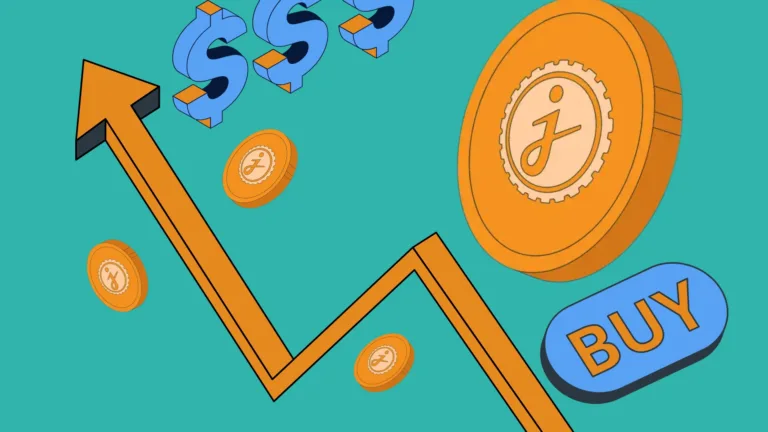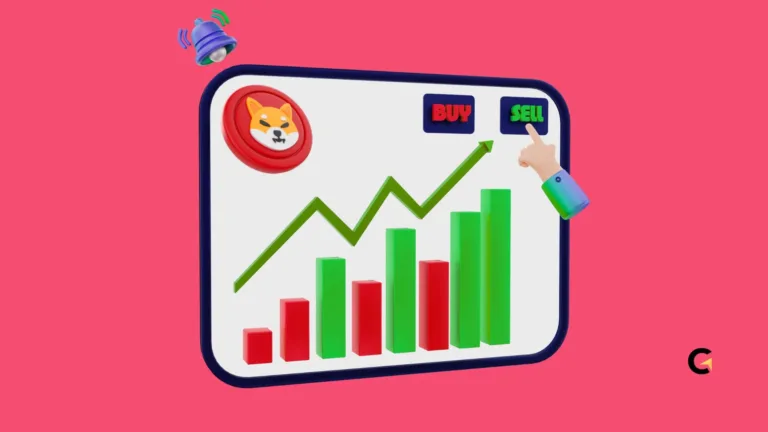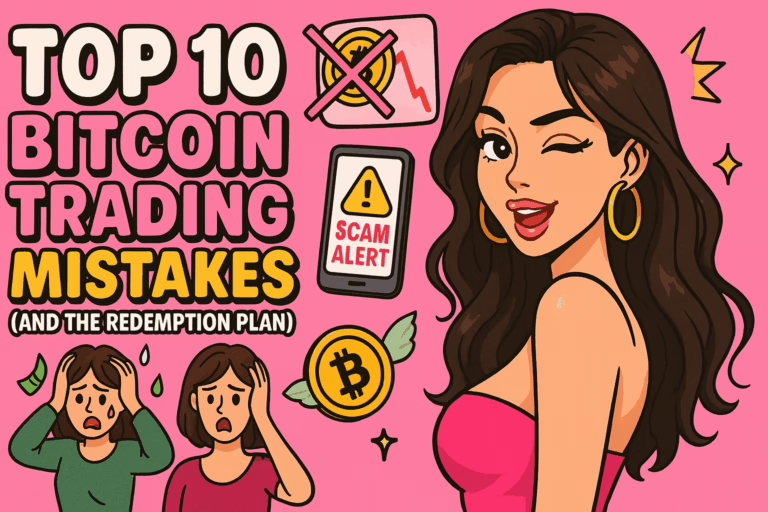Bitcoin 101: Smart Investing, No Meltdowns
Getting into Bitcoin can feel like stepping into a whole new universe—one filled with exciting opportunities but also potential traps.
A lot of people back away quickly, intimidated by wild price swings or technical terms that sound like they’re straight out of a sci-fi movie.
But hey, everyone starts somewhere. The key is simple: learn the basics, understand the risks, and build a solid strategy.
This guide will walk you through the entire world of Bitcoin investing—what it actually is, how to store and buy it, and how to protect yourself from regret.
Principal Conclusions
Hide-
Bitcoin is a decentralized digital currency—no banks, no government control. It was introduced in 2008 by a mysterious figure named Satoshi Nakamoto. Think: no middlemen, just you and the system.
-
Bitcoin's price is highly volatile. It can skyrocket or crash in a matter of minutes. That’s why you should only invest money you’re absolutely okay losing. Never touch your rent or emergency fund.
-
Bitcoin wallets come in two types: hot wallets (easy access, great for beginners) and cold wallets (offline storage for max security).
-
Don’t want the hassle of holding actual Bitcoin? Bitcoin ETFs like BlackRock’s IBIT let you invest in the price of Bitcoin via the stock market—no wallet required.
-
Smart strategies like Dollar-Cost Averaging (DCA) and solid asset allocation can help reduce stress when the market gets wild. You’ll thank yourself later.
It’s an easygoing read, but packed with serious info you don’t want to miss if you’re looking to invest smartly, not just follow the hype.
Why Are People So Hyped About Bitcoin?
Imagine a type of money that doesn’t rely on banks, can’t be manipulated by governments, and has a hard cap of 21 million units.
That’s Bitcoin—rare, independent, and highly sought-after. Some people even call it “digital gold” because of its scarcity and long-term potential.
Bitcoin made headlines again in early 2025 when it crossed $100,000 per coin. That kind of growth makes a lot of people curious—and rightly so.
But for every opportunity, there’s also a learning curve. In the Bitcoin world, it’s not about being the fastest, but about being the most prepared.
Risk and Volatility: It’s Not Just About the Gains
Let’s be real: Bitcoin is a total rollercoaster. It can pump 15% overnight… and drop 20% the next day.
For example, even though the IBIT ETF rose 14% this year, some crypto-related stocks like SMLR plunged 40% due to company-specific issues.
That shows investing in crypto—whatever the form—requires careful strategy. No shortcuts.
Here are some basic rules to manage risk:
-
Keep your Bitcoin investment to 5–10% of your total portfolio.
-
Set a stop-loss strategy so you don’t act on emotion when the market dips.
-
Don’t overestimate your skill—always be ready for the worst-case scenario and diversify across different assets.
Bitcoin Wallets: Where Your Digital Money Lives
Before you can buy Bitcoin, you need a wallet to store it. Think of it like a bank account—but without the bank.
| Wallet Type | Pros | Cons |
|---|---|---|
| Hot Wallet | Super convenient for quick online transactions | Vulnerable to hacking (it’s connected to the internet) |
| Cold Wallet | Ultra-secure offline storage | Less practical for everyday use |
If you’re just getting started, go with a hot wallet from a trusted platform like Binance, Coinbase, or Trust Wallet.
But don’t store all your funds there. Once your balance grows, move a chunk to a cold wallet (like Ledger or Trezor) for better long-term protection.
Also remember:
-
Always back up your wallet’s recovery phrase in a safe, offline spot (no cloud, no email).
-
Never click sketchy links or install unverified wallet apps. Stay sharp.
How to Buy Bitcoin: Pick What Works for You
There’s more than one way to buy Bitcoin. Just choose what fits your style and comfort level:
A. Crypto Exchanges
Platforms like Binance, Coinbase, and Kraken let you buy Bitcoin using bank transfers, credit cards, or even e-wallets. It’s beginner-friendly and feels like online shopping.
B. P2P Marketplaces
These let you buy Bitcoin directly from another person. Binance P2P, LocalBitcoins, and Paxful offer flexible payment options. But you’ll need to do your own research to verify sellers—no one holds your hand here.
C. Bitcoin ETFs
Prefer the stock market? You can buy ETFs like IBIT by BlackRock or GBTC by Grayscale and gain exposure to Bitcoin’s price without owning any actual coins or dealing with wallets.
Each method has its pros and cons:
-
Exchanges: easy to use but charge fees.
-
P2P: flexible but riskier if you’re not careful.
-
ETFs: safer and regulated, but you can’t spend your Bitcoin directly.
Diversify & Strategize: So Your Portfolio Doesn’t Stress You Out
Don’t put all your hopes (or money) into one asset. Bitcoin is awesome, but it’s not the only one worth watching.
A. Dollar-Cost Averaging (DCA)
Instead of going all in at once, invest a fixed amount regularly (say, $10 every week). This helps even out your average buy price and lowers the pressure of market timing.
B. Portfolio Allocation
Mix Bitcoin with other assets like stocks, bonds, or even gold. This classic strategy keeps your finances balanced. So if Bitcoin dips, you’re not totally wrecked.
C. Stay Informed
Crypto moves fast. What’s hot today might be irrelevant tomorrow. So:
-
Read trusted sources like CoinDesk, CoinTelegraph, or exchange blogs.
-
Follow legit crypto analysts on YouTube, Discord, or Twitter.
-
Don’t rely solely on TikTok trends or random Telegram groups.
Are You Ready to Invest in Bitcoin?
Investing in Bitcoin is more than just buying and hoping the price goes up. It takes learning, discipline, and a bit of mental toughness.
But if you start with solid research, understand the risks, and use the right tools and strategies, you can take that first step with confidence.
Take your time. Crypto is not a sprint—it’s a marathon. The more you understand how it works, the better your odds of not just surviving, but thriving.
So read up, stay curious, and move smart. The Bitcoin world is waiting—but only for those ready to play the long game.
Frequently Asked Questions (FAQs)
What’s the minimum amount to start investing in Bitcoin?
There’s no strict rule. Most platforms let you start with as little as $10–$20 just to get familiar with the system.
Do I need technical skills to get started?
Not at all. Modern exchanges are designed to be user-friendly. But it’s important to know the basics of security, like 2FA and how to protect your private keys.
How do I calculate my profit and taxes?
Track all your transactions and keep records. For taxes, check your local regulations or consult a tax advisor—rules vary by country.
Can Bitcoin be stolen?
Yes—especially from hot wallets. That’s why cold wallets are recommended for long-term storage, and you should always use full security features.
Are there alternatives to Bitcoin?
Absolutely. Ethereum, Binance Coin, and stablecoins like USDT are popular alternatives, depending on your investment goals.







